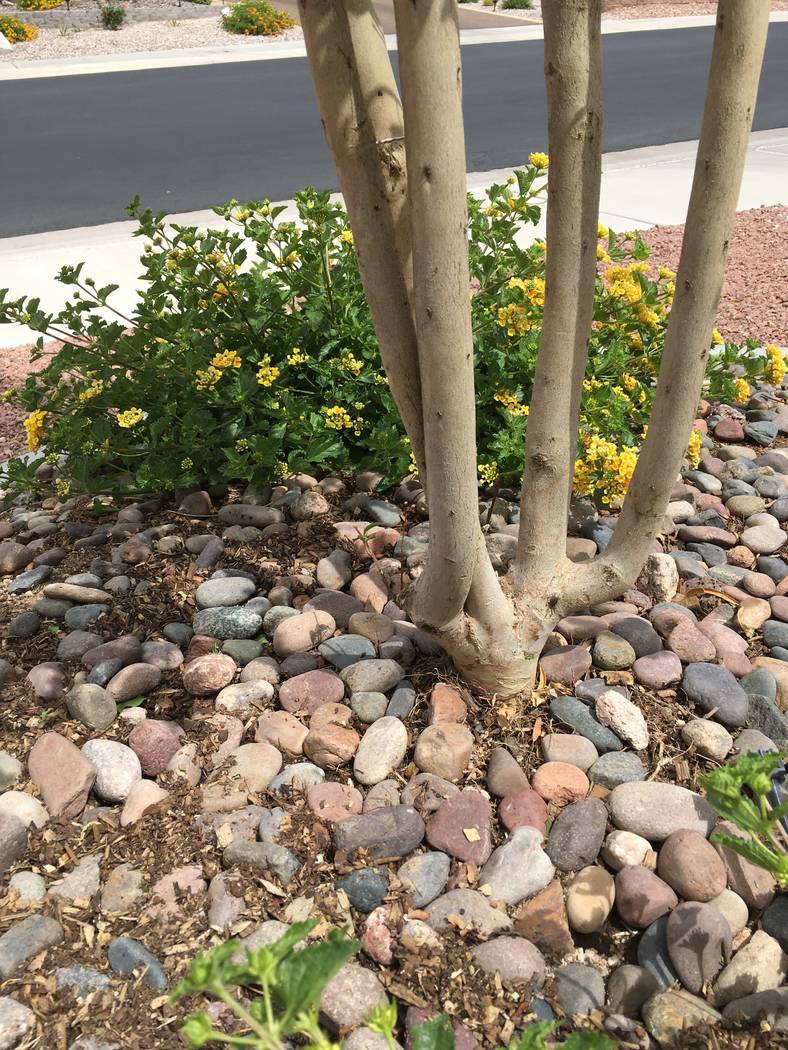Ironite has changed from original product, now safe for crops


Q: Is Ironite safe to use in a vegetable garden? I have read somewhere that it’s not, but the label says you can use it.
A: The current Ironite products are totally different from the original Ironite product but carry the same name. Ironite was, and still is, a soil amendment/fertilizer used for correcting yellowing plants growing in alkaline soil.
The original Ironite product did two things: It lowered the soil pH and added iron to the soil. It created a very good name for itself in the landscape and golf industry.
The original Ironite product came from recycled mine tailings. These tailings also contained heavy metals — lead and arsenic being the two that got Ironite into trouble. There was a long controversy regarding whether the lead and arsenic were problematic for food crops.
The Ironite label was changed to exclude applications to food crops to circumvent this problem. The old product came to an end when the mine supplying tailings used by Ironite was declared an EPA Superfund site around 2005 and closed.
Ironite is now owned by Central Garden &Pet Co., through its subsidiary, Pennington. It is a totally different product from the Superfund site days but carries the same name. Because of its industry reputation, a line of products carrying the Ironite name has evolved.
In a nutshell, Ironite is not the same product as it was years ago. The EPA allows the label to include application to food crops.
Q: I have a tomato garden 4 feet by 8 feet by 1 foot deep. Every year I put three new plants of Early Girl, Champion and Roma varieties of tomato in this bed. I redo the soil every year and plants get very big with lots of flowers and tomatoes. My tomatoes only get about 2 inches in diameter. What am I doing wrong?
A: All three varieties of tomatoes are solid producers for the desert. Other varieties that should perform well for you include Patio, Celebrity, Jet Star and most of the smaller cherry and grape tomatoes. None of these varieties are “beefsteak” type tomatoes but smaller in size and have been solid performers in our climate for many years.
Small fruit is not necessarily a bad thing. Smaller fruit is frequently more intensely flavored than larger fruit coming from the same variety. However, we are conditioned to think that bigger is better.
Provide enough water so that plants are not stressed. Water is an extremely important, limiting factor when it comes to fruit size. If plants are water-stressed when the fruit is gaining in size, the result will be smaller fruit than expected by the variety.
Schedule watering before the heat of the day begins. Soil moisture monitoring is important but what can be more important is the use of mulch on the soil surface when air temperatures surpass about 80 F.
The soil should stay evenly moist and not widely fluctuate between excessively dry and sopping wet. That can be a problem under desert conditions.
Surface mulch helps even out soil moisture. It doesn’t have to be thick. A half inch covering the soil is deep enough, like dusting with powdered sugar. Renew it as soon as you see the soil surface peeking through.
Straw is recommended a lot because it was cheap. I don’t like it much because it’s hard to work into the soil at the end of the growing season, and it’s no longer inexpensive.
I like things that dissolve easily into the soil such as shredded newspaper, rice hulls, pine shavings used for animal bedding, etc. Apply more of it two or three times during the growing season. Yes, these types of mulches can rob the soil of nitrogen as they decompose, but if you’re continuously feeding vegetables with small amounts of nitrogen it won’t make any difference.
Encourage deeper rooting through soil improvement. Make sure the soil is amended, biologically active and easy to work before planting.
A good quality compost mixed in the upper 8 to 10 inches goes a long way toward better rooting. A garden trowel should slip easily into a properly amended soil for vegetables, herbs and spices.
Fertilizers improve fruit production. Use a pre-plant, high-phosphorus fertilizer when planting. One phosphorus application at the beginning of the growing season is enough to boost flowering and fruiting through the season.
Don’t forget the easily forgotten, last number on the bag: potassium. Potassium has never been linked to improved fruiting but is very important in general plant health and well-being. It’s hard to over apply potassium.
Q: We have a crape myrtle tree planted from a 24-inch box. It is multitrunked. One of the lower trunks is crossed by a large branch from another trunk. I was wondering if I could gently coax this branch back into a new location. I don’t want to remove it because it will leave a large gap in the canopy.
A: Small, young branches can be bent, twisted and secured into new locations. They are much less pliable starting after the first year of growth.
They are most pliable during the first year and the beginning of their second year of growth. They are most pliable when new growth is just beginning up until about two months after growth begins.
Sorry, but older branches must be removed. They cannot be bent into new positions.
These branches are too old to bend without breaking or snapping off. Use a sanitized handsaw and remove it close to the trunk. The cut does not have to be treated in any way. In a couple of years, with some proper pruning, it will not be missed.
The side with the hole you created after pruning will have a lot of new growth the first year, particularly where limbs are exposed to sunlight. Remove new suckering growth except perhaps eight to 10 growing where you want them. Desirable new growth would be growing outward at different locations along the trunk at 45-degree angles from horizontal.
If the tree needs three or four new suckers, leave eight. Rub out anything growing inward or crossing as soon as you see it. Removing undesirable growth early causes the remaining suckers to grow faster and stronger into new branches.
Force the tree to become bushier and denser by removing strong, vertical growth. Keeping it bushier and dense helps provide a good floral show each year and restrains its growth. Remove unnecessary growth with hand pruners any time during the growing season.
Major limb removal requiring more than hand shears should be done during the winter. All crape myrtles produce flowers on new growth. This means pruning during the winter is the best time to encourage increased flowering.
During the winter, find branches growing vigorously vertical and remove them where they begin their upward growth. Reducing plant height by removing growth that is strongly vertical helps keep the plant denser and more floral. Remove these branches at a crotch, i.e., just above a limb growing outward. Do not leave a stub.
Branches longer than 24 inches growing anywhere on the tree should be cut back to about 18 inches in length during the winter.
If you have rock covering the soil underneath the tree, it will start having nutritional problems in a couple of years. Apply bagged compost to the rocks beneath the tree and water it in.
If this is unsightly to you, auger vertical holes multiple places in the soil around the tree to a depth of 18 inches. Fill these holes with compost.
The best compost I have found for this purpose in the Las Vegas area is available from Viragrow in North Las Vegas. Don’t add any fertilizer if you use this compost. It has plenty naturally in it. Every other year, lightly sprinkle the same compost over the top of the soil and water it in.
Bob Morris is a horticulture expert and professor emeritus of the University of Nevada, Las Vegas. Visit his blog at xtremehorticulture.blogspot.com. Send questions to Extremehort@aol.com.



















